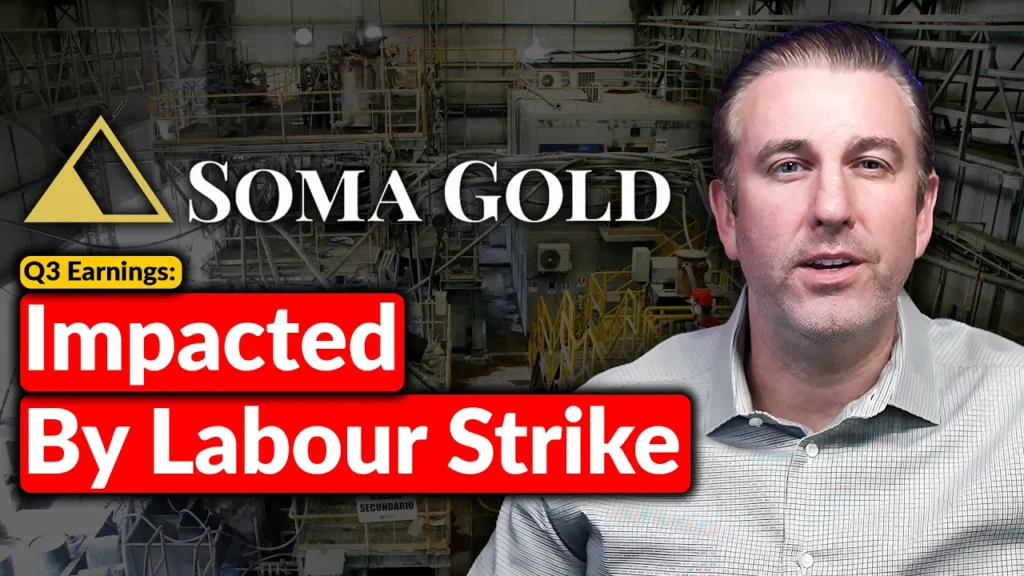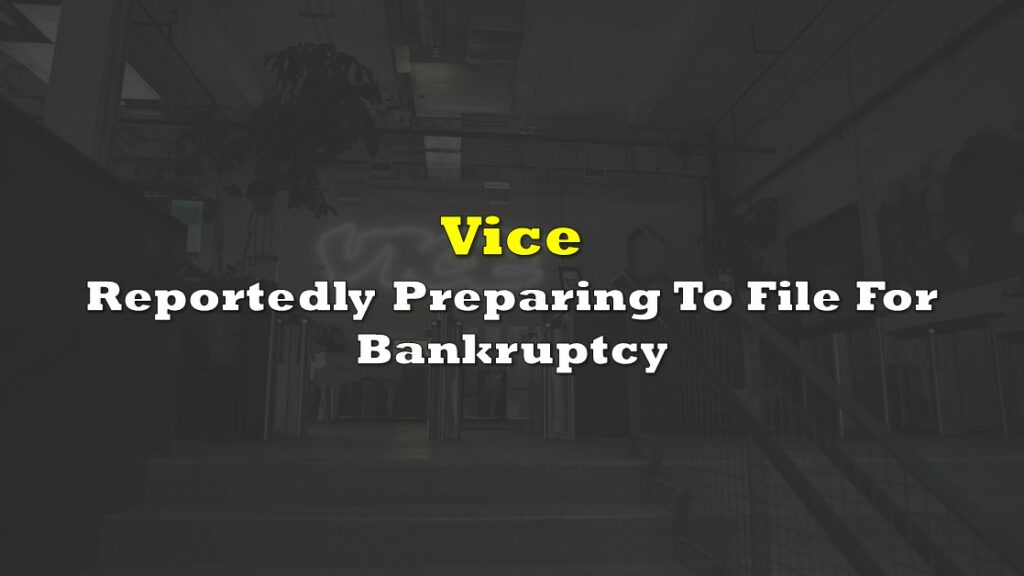This story highlights the journey of a group of rebellious individuals from Montreal who revolutionized the media landscape with their bold and unconventional content, amidst the disruptive force of the internet. Initially a modest alternative magazine, VICE swiftly ascended to become a dominant force in global media, fearlessly exploring uncharted territories and uncovering unique narratives.
However, despite its once formidable $5.8 billion valuation, VICE now finds itself closing shop and laying off hundreds of staff as it deals with bankruptcy, burdened with debts exceeding a billion dollars.
The VICE CMS has been turned off. That's all folks.
— jordan pearson (@neuwaves) February 22, 2024
VICE Media, once hailed for its cutting-edge content catering to millennials and Gen Z, has taken a significant blow as it grapples with financial difficulties. After filing for bankruptcy, the company was acquired by Fortress Investment Group for a reported $350 million, marking a tumultuous chapter in its history.
Efforts to salvage the company’s financial situation through cost-cutting measures and job reductions proved unsuccessful.
According to CEO Bruce Dixon, VICE will undergo a transition to a “studio model” and seek partnerships with other media entities. This move comes with the unfortunate consequence of eliminating hundreds of positions as part of a significant workforce reduction.
The decline of VICE Media mirrors challenges faced by both traditional and digital media outlets in navigating the evolving landscape of journalism and securing a sustainable business model. Similar entities such as BuzzFeed News and Jezebel have shuttered operations, while others like Vox Media and Condé Nast have resorted to substantial job cuts in a bid to stay afloat.
The greatest media swindle of my generation is over.
— Jesse Brown (@JesseBrown) February 23, 2024
Everything VICE first stood for – rapey hedonism, disdain for sincerity, casual cruelty and funny racism, are now totally passé. A lot of good journalism was done in service of their Act Two narrative of Cool News for Kids but… https://t.co/vhvjo5xA11
Vice’s beginnings
VICE Media, founded in 1994 by Shane Smith, Suroosh Alvi, and Gavin McInnes, started as a small alternative magazine in Montreal. Over the years, it evolved into a global media giant renowned for its daring and original content.
Expanding its reach, VICE moved to New York City, launched its first website, and opened retail stores in the early 2000s. By 2007, the company had international editions, an independent record label, and an online video channel (VBS.com), broadening its coverage to include serious topics like the Iraq conflict. Further growth came through acquisitions like i-D magazine in 2012, the launch of Vice News in 2013, and the creation of Viceland in partnership with A+E Networks in 2016.
Distinguishing itself with unapologetic content and global reporting, VICE covered fringe topics and ventured into dangerous territories like North Korea and Liberia. Its emotionally transparent storytelling and character-driven content attracted a loyal following, especially among young demographics. Partnering with HBO for Vice News Tonight in 2015, later moving to Showtime, showcased VICE’s unique approach to news media.
However, despite its initial success, VICE faced financial challenges, struggling to turn a profit and accumulating significant debt. Negotiations with Disney for an acquisition in 2016 fell through, and attempts to go public via a special purpose acquisition company in 2021 encountered market resistance. In response, VICE implemented cost-cutting measures, including layoffs and closures of segments like Vice World News.
Disney exit
Disney has written off its entire investment in VICE Media, totaling $353 million. This came on the heels of a previous write-down of $157 million. Disney’s initial investment in VICE exceeded $400 million, with additional sums potentially including investments from A&E, jointly owned with Hearst, and $70 million from 21st Century Fox, acquired by Disney in 2019.
The decline in VICE’s value mirrored broader trends in digital media, where once-prominent publishers are now valued significantly lower than previously estimated. Examples abound, with properties like Mic, Mashable, Gawker Media, and The Onion fetching prices well below their previous valuations.
Several factors have contributed to this decline. Digital media companies had initially banked on reaching young audiences through platforms like Facebook and Google, expecting substantial ad revenue. However, the dominance of Facebook and Google in the digital ad space has left publishers with far less revenue than anticipated.
Disney’s characterization of the $353 million write-off as an “impairment charge” signals that there is no remaining value in its VICE investment.
Milk and management
Back in July 2023, Katie Way, a former senior staff writer at VICE, shed light on her three-and-a-half year tenure at the media company. She observed the company grappling with financial difficulties, resulting in a scarcity of basic resources. This included delayed payments to cast and crew, a lack of reimbursement for expenses incurred during reporting assignments, and shortages in essential tools needed for journalism.
Despite these challenges, Way noted that executive salaries at VICE remained substantial, with top-level employees receiving retention bonuses and hefty paychecks. Notable compensations highlighted in her account include Chief Operating Officer Cory Haik earning $726,068, Chief People Officer Daisy Auger-Dominguez receiving $748,583, and Chief Marketing Officer Najda Bellan-White taking home $834,931, along with significant bonuses.
The revelation came amid a backdrop of layoffs at VICE, which coincided with the company’s bankruptcy filing. This move spared VICE from providing full severance packages to affected employees, prompting former and current staff members to rally together and raise funds to support their laid-off colleagues.
In her critique, Way points to mismanagement at VICE, suggesting that it reflects broader issues within the digital media industry, ultimately impacting journalism as a whole. Despite the uncertainties and challenges faced, employees at VICE remained dedicated to their work, navigating obstacles imposed by upper management.
“We stopped using Slack because VICE stopped paying for it. Snacks disappeared from the mostly vacant office, except for coffee and an inexplicably—believe me, we asked, and they did not explain it—large amounts of milk,” Way wrote.
If people think Vice mgmt’s incompetence is exaggerated: At one point they were seemingly spending 90% of the snack budget on milk. Every time our union committee met my NY coworkers would talk about how much milk there was. Around this time they just stopped paying for PACER
— Paul Blest (@pblest) February 23, 2024
Reflecting on a past meeting with former CEO Nancy Dubuc, Way expressed disappointment in the lack of transparency surrounding financial matters and the significant compensations received by executives, calling attention to the need for accountability within the organization.
VICE, under Dubuc’s leadership, maintained that it is undergoing strategic changes aimed at addressing both financial and cultural issues.
“Vice is firing on all cylinders and on target to meet, if not exceed, its financial targets for the third straight quarter,” said a company spokesperson. “Vice will always be there with a megaphone for the more than half of the people on this planet under the age of 30 who crave independent world-class content.”
Despite that comment, the website of the publisher was officially shut down on February 22.
The year 2024 has seen a cascade of layoffs across various news outlets, including The Messenger, TechCrunch, the Washington Post, the Los Angeles Times, and the Wall Street Journal. These layoffs underscore a trend of dwindling newsroom employment, with data from the Pew Research Center indicating a significant decline between 2008 and 2021.
Information for this story was found via Vox, AlJazeera, Hell Gate, and the sources mentioned. The author has no securities or affiliations related to this organization. Not a recommendation to buy or sell. Always do additional research and consult a professional before purchasing a security. The author holds no licenses.







